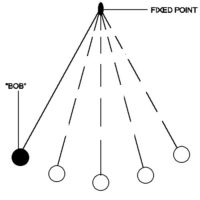 Have you ever had that feeling of an effortless flow in your run? When you seem to fly over the terrain with ease? When you feel as though you could run forever? When you find your own space in “the zone?” It’s an exhilarating, sometimes joyful feeling. People train hard to improve strength, stamina, and technique to improve their chances of finding that feeling – but how do you train flow? It’s not as easily quantifiable as some of the other aspects of your running training. But with some simple cues and a little attention to the quality of your movement, you can find your own consistent pathway to fluidity and ease.
Have you ever had that feeling of an effortless flow in your run? When you seem to fly over the terrain with ease? When you feel as though you could run forever? When you find your own space in “the zone?” It’s an exhilarating, sometimes joyful feeling. People train hard to improve strength, stamina, and technique to improve their chances of finding that feeling – but how do you train flow? It’s not as easily quantifiable as some of the other aspects of your running training. But with some simple cues and a little attention to the quality of your movement, you can find your own consistent pathway to fluidity and ease.
As a dancer, once of my favourite techniques was that of Jose Limon. The work of this renown modern choreographer dealt in the richness between extremes. It involved finding suspension and fall, the opposition of energies. The technique enabled me to find a rise and fall in my movement that made transitions effortless and created a flow that was really fun to move within. I’ve realized, in my non-dance life, that Limon’s approach to movement can be applied to just about any kind of physical activity. Every activity has a rhythm, an ebb and a flow, a recognizable signature that is unique to that kind of movement. Find that signature, and understand how to flow effectively through those transitions, and your movement gains clarity, efficiency and ease!
So how to find this rise and fall? A lot of it hinges on letting go of movement and support patterns that get in the way of the flow! Here’s my primer for finding the rise and fall in YOUR run:
To begin running, one of the first actions is to lean forward, hinging at the ankle joint, until the point of balance is exceeded and you “fall” into your gait. If you allow yourself to fall too far though, your foot strike is becomes heavy, and your weight drops down sharply to compress the joints.
You need a little lift to balance that falling action. As you begin to fall, imagine the core muscles lengthening upward, supporting the spine and pelvic floor vertically. With the rise of the torso and an easy fall forward from the ankles, you’ll find your legs are able to cycle freely underneath you. This continually flowing rise and fall within the run supports easy motion. Your pelvis will be carried through space easily, instead of bouncing up and down on your legs.The hip flexors and inner thighs will find length, allowing for still more freedom in the cycling of the legs, moving you forward in space more easily too. And that means more distance covered, in less time, with less effort. And isn’t that part of the goal?
As you run, here are some more movement cues for you to play with that will help you discover your own personal flow:
1. Open Your Feet Whether you’re used to wearing race cars on your feet, or whether you like barefoot or minimalist shoes – open the soles of your feet to the floor, allowing the foot to spread underneath you as you transfer your weight forward. If the foot and ankle are too stiff, you end up vaulting over tight structures, which is an energy-wasting movement strategy. Give yourself a little foot rub before you head out. Create a little space between the bones and softness in the tissues. The arches of your feet may be better able to manage load transfer if they’re not locked up.
2. Release Your Tail & Lift Up Out of Your HipsIf you’re like a lot of people, you probably sit for long periods each day. Long hours on your duff can create a situation where, when you stand, your tail is tucked, your inner thighs are over-active and your hip flexors are tight. With the pelvis tucked under, your center of gravity falls back. It becomes difficult to “fall” forward from your ankles into your run, because your pelvis is dropped behind your legs, instead of sitting on top of them. To compensate, you lean forward at the hips and end up using the hip flexors and a strong push from the feet to power your forward motion. Your steps feel heavy, your thighs tire and you may find your back gets sore.
To begin to change the tuck pattern for a more efficient gait – start in a standing position. This is where finding the rise and fall STARTS. Open your feet underneath you. Un-tuck your tail. Let the inner thighs lengthen, letting the thigh bones hang from your hips. You may now feel as though your pelvis is tipped forward and your lower back is arched. If that’s the case for you, don’t tuck your tail to correct it!! Instead, find some rise! Connect to the length of your spine, imagine gently pulling up between your pubic bone and your belly button. You want your core to feel long, not just tight. Float your head and shoulder girdle. Can you breath easily? If not, ease up on the “muscle” and find a little more length. If you can’t breathe now, it will only get worse when you’re running.
Once you’ve released your tail, lengthened your torso and brought your pelvis back up on top of your legs, see if you can keep that length, lean forward at the ankles and fall into your gait as described above. When it works, your legs will feel lighter, and your footfalls will be softer. You will experience a buoyancy between the feet and the pelvis and spine that reduces impact and joint compression. As you run, check in again from time to time. Make adjustments as you notice old habits creeping back in again.
3. Float Your Neck Long & Hang Your Shoulder GirdleAs you lift out of your hips, allow that length to travel up the spine, floating the neck and head easily on top of the spine. Imagine that the whole shoulder girdle is suspended from the most prominent vertebrae at the top of your back (just below your neck). Without supportive length, you may be collapsing into the curve of your neck as you run, and your shoulders may be rounding forward – making it harder to breathe well. A little float helps to look after the considerable weight of your head, contributing to the feeling of rise. When the neck collapses, your tail will likely tuck too, and you can no longer lift into the fall of your forward motion.
4. Swing Your Arms The swing of your arms has its own rise and fall. Allow your elbows to hang, feeling the pendulum action of your upper arms moving in opposition to each other. Avoid crossing your own midline with your arms. Relax your shoulders and hands. Notice how the movement of your arms coordinates with the movement of your torso and your legs. How does it hook into the rise and fall in the rest of your body?
The swing of your arms has its own rise and fall. Allow your elbows to hang, feeling the pendulum action of your upper arms moving in opposition to each other. Avoid crossing your own midline with your arms. Relax your shoulders and hands. Notice how the movement of your arms coordinates with the movement of your torso and your legs. How does it hook into the rise and fall in the rest of your body?
Instead of plugging in to your favourite tunes, tune in to your own movement instead. Try a couple of these movement cues and see how your body responds. With a little experimentation, and some practice, you just might find a new quality of movement that propels you to more fun, and better results!
